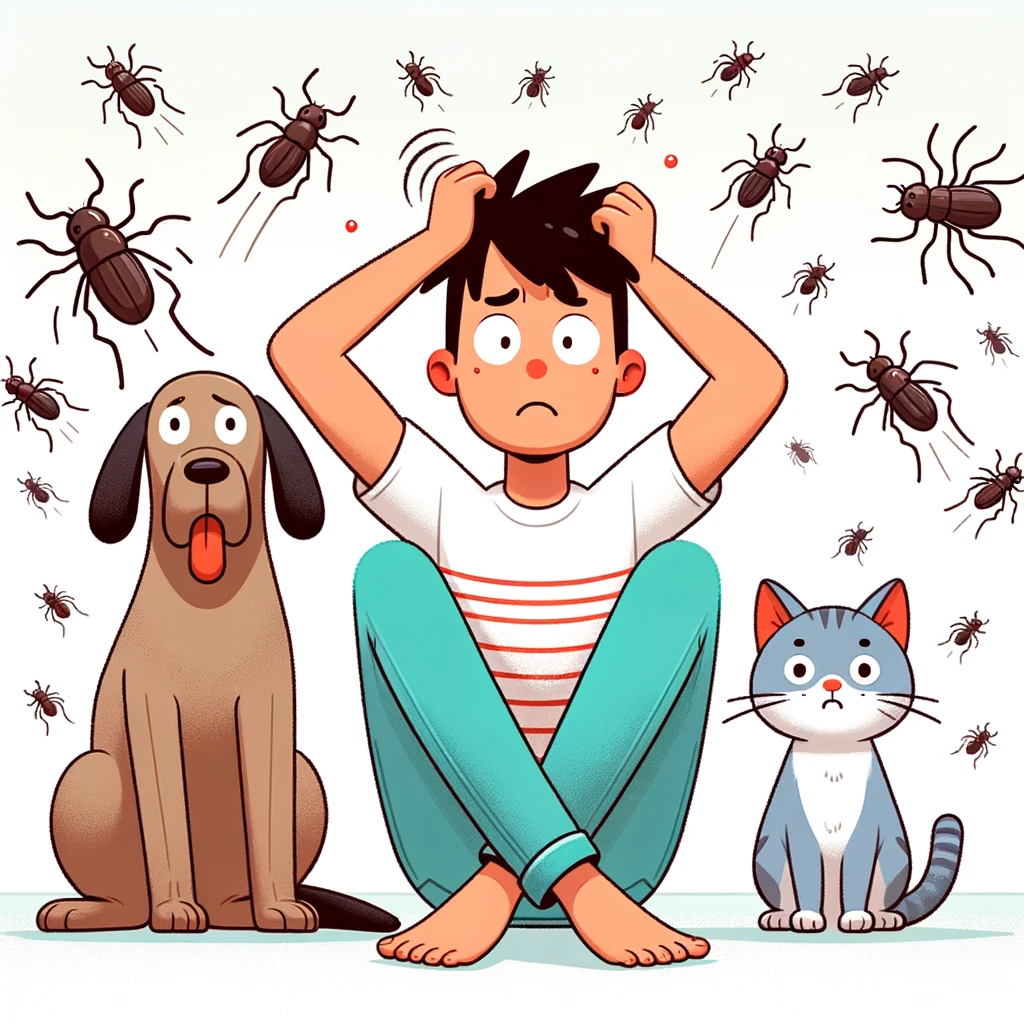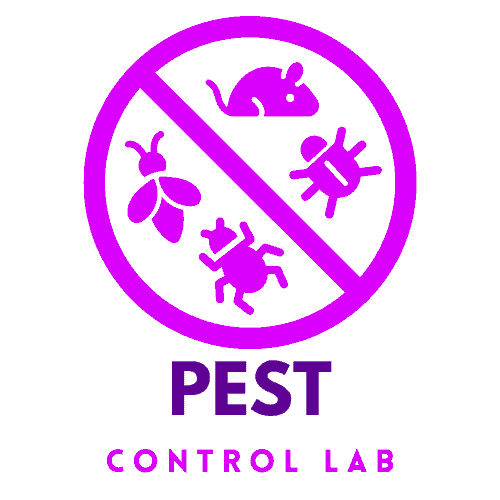Flea-Free Zone: Ultimate Guide for Pet Owners
Key Takeaways:
- Understand the flea lifecycle to combat infestations effectively.
- Combine pet treatments with home and environmental care for the best results.
- Regular cleaning and pet grooming are essential preventive measures.
- Seek professional help when DIY methods fail, or infestations persist.
Have you ever felt like you’re in a never-ending battle against fleas in your home and on your pets? You’re not alone. Fleas can be frustratingly resilient, but fear not! We’re here to arm you with practical strategies to tackle flea infestations head-on. This guide covers all bases, from understanding the enemy to deploying safe treatment options and preventive measures. So, let’s dive in and explore how you can create a flea-free environment for you and your furry friends.
Understanding Flea Infestations

The Lifecycle and Impact of Fleas
Fleas are more than just a nuisance; they’re hardy parasites that can cause serious discomfort for your pets and disrupt your home’s peace. To effectively combat them, it’s crucial to understand their lifecycle: from egg to larva, pupa, and finally, adult. This cycle can be as short as three weeks in ideal conditions, so infestations can quickly spiral out of control.
Fleas thrive in warm, humid environments and can jump onto your pet from other animals or infested areas. Once aboard, they feed on your pet’s blood, causing itching and discomfort. This can lead to more severe reactions like dermatitis for sensitive or allergic pets. Fleas can also transmit tapeworms and other diseases, making their control critical to pet care.
Understanding this lifecycle highlights why it’s important to attack fleas at every stage – not just the adults. This involves treating your pet, cleaning your home thoroughly, and often, being proactive with preventive measures. Remember, dealing with fleas is not just about relieving the immediate itch; it’s about breaking the cycle to prevent future infestations.
Safe Treatment Options for Your Home
Combating Fleas with Safety in Mind
Safety is paramount when eradicating fleas from your home, especially if you share your space with pets and children. Chemical treatments, such as insecticide sprays and powders, can be effective but must be used cautiously. Always opt for products designed to be safe around animals and follow the instructions in the letter. Treating all areas of your home is crucial, as fleas can hide in carpets, furniture, and even small crevices.
Consider using diatomaceous earth or borax for a more natural approach on your carpets and floors. These substances dehydrate and kill fleas at all life stages without harsh chemicals. However, it’s important to vacuum these up thoroughly after treatment to prevent any respiratory irritation for your pets or family members.
Another key strategy is to wash all bedding, throw rugs, and pet beds in hot water. This can help eliminate fleas or eggs that have made themselves comfortable there. Regular vacuuming is also essential, as it can remove fleas, eggs, and larvae from your floors and upholstery. Make sure to dispose of the vacuum bag or clean the canister outside to avoid re-infestation.
By combining these methods, you can create a multifaceted approach to flea control in your home that prioritizes effectiveness and safety.
Protecting Your Pets from Fleas

Tailored Treatments for Furry Family Members
The cornerstone of flea control is protecting your pets directly, as they’re often the primary target for these pesky parasites. A range of safe and effective treatments is available, and the best choice depends on your pet’s species, age, health, and lifestyle.
Topical spot-on treatments are popular for both dogs and cats. These products are applied to the skin, usually between the shoulder blades, and provide month-long protection against fleas. Using a product formulated specifically for your pet’s species is crucial, as some dog products contain toxic ingredients for cats.
Oral flea treatments are another option. They offer the convenience of a pill that protects your pet from fleas for up to a month. These can be particularly useful for pets not tolerating topical treatments well. Again, it’s important to consult with your vet to choose the right product for your pet’s needs.
For those preferring a natural approach, flea combs and regular bathing can help remove fleas from your pet’s coat. Additionally, certain essential oils and plant-based products can offer some repellent properties, but they should be used with caution. Always consult a veterinarian before using these alternatives, as some can be harmful if not used correctly.
Integrating these treatments into your pet’s routine care can significantly reduce the risk of flea infestations, ensuring your pet remains comfortable and healthy.
Preventive Measures to Keep Fleas at Bay
A Proactive Approach to Flea Prevention
Preventing flea infestations is far more effective and less stressful than eliminating them once they’ve taken hold. A comprehensive prevention strategy includes regular home maintenance, pet care, and environmental adjustments.
Firstly, maintain a clean home environment. Frequent floor, carpet, and furniture vacuuming removes flea eggs, larvae, and adults. Pay special attention to areas where your pets spend a lot of time. Immediately dispose of the vacuum cleaner bag or empty the canister outside after each use to prevent fleas from coming back.
In terms of pet care, regular grooming is essential. Use a flea comb to check for and remove fleas from your pet’s coat. Bathing your pet with a mild, pet-safe soap can also help remove fleas without the need for harsh chemicals. Establishing a routine for pet bedding laundry is crucial, too. Wash all bedding in hot water weekly to kill fleas and their eggs.
Environmental management can further reduce the risk of flea infestations. Keep your yard tidy by mowing the lawn regularly and clearing away debris where fleas might hide or breed. Consider using natural predators like nematodes, microscopic worms that feed on flea larvae, in your garden to control flea populations outdoors.
By incorporating these preventive measures into your routine, you can create an unwelcoming environment for fleas, protecting your home and your pets from infestation.
When to Seek Professional Help

Recognizing the Need for Expert Intervention
Even with the best preventive measures and treatment efforts, sometimes flea infestations can become overwhelming or persist despite your best efforts. Recognizing when it’s time to call in professional help is crucial to protect your home and pets from the adverse effects of a severe infestation.
One clear sign that professional pest control is needed is when you’ve tried multiple over-the-counter treatments without success. These products can sometimes be ineffective against serious infestations or if fleas have become resistant. Professionals can apply more potent treatments that are not available to the general public, often with guarantees of effectiveness.
If you or your family members start experiencing flea bites frequently, it’s another indicator that the situation may be beyond DIY solutions. Flea bites are irritating and can lead to allergic reactions in some people. A professional can thoroughly treat your home to eradicate fleas and their eggs, relieving bites and itching.
Pet owners should also consult their veterinarians if their pets continue to suffer from fleas despite using vet-recommended flea treatments. This could be a sign of an infestation that requires professional pest control or additional medical treatment for the pet.
Hiring professional help is a decision to ensure the health and comfort of your family and pets. Experts can offer targeted, practical solutions and advice for preventing future infestations, giving you peace of mind.
Embracing a Flea-Free Future
Tackling flea infestations requires a multifaceted approach, combining direct treatments for your pets with comprehensive care for your home and environment. Understanding fleas’ lifecycle and implementing preventive and active control measures are key to maintaining a comfortable, healthy living space for you and your furry friends. Remember, persistence and consistency in these efforts can greatly reduce the likelihood of infestations. And when situations get tough, don’t hesitate to seek professional help. By following these strategies, you can look forward to embracing a flea-free future for your household.

FAQs:
- How often should I treat my pet for fleas?
- Treat your pet for fleas as recommended by the product guidelines or your vet, typically once a month.
- Can fleas survive without pets?
- Yes, fleas can survive on organic debris in carpets or upholstery but prefer living hosts for feeding.
- Are natural flea remedies effective?
- Some natural remedies can repel fleas, but their effectiveness varies. Always consult with a vet before trying new treatments on your pet.




